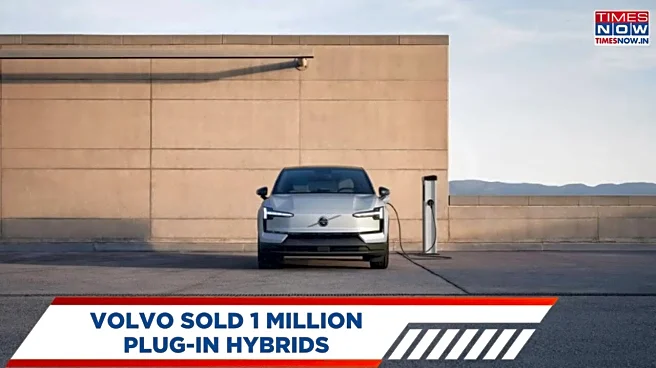In a Chinese laboratory, a humanoid robot with a synthetic abdomen hums softly, its artificial womb filled with nutrient-rich fluid designed to cradle a human embryo for nine months. Across the globe,
in US fertility clinics, robotic arms guided by artificial intelligence (AI) handle egg retrievals with precision, whereas algorithms analyse embryo videos to boost IVF success rates by up to 15%.
These breakthroughs—China’s “birthing robot” aiming for market release by mid-2026 and America’s AI-driven IVF systems already in use—are no longer the stuff of science fiction. They signal a seismic shift in human reproduction, where machines could soon conceive, gestate, and deliver babies.
For the 27 million Indian couples grappling with infertility, this is a beacon of hope in a nation where people have limited access to top-notch healthcare systems and private IVF clinics charge exorbitant fees. Yet, as science advances, it drags a tangle of ethical, social, and economic questions in its wake. Could robots democratise parenthood for Indians, or widen the chasm between the haves and have-nots? Why are global labs pushing these boundaries now, and what do they reveal about the future of family?
Let’s explore the groundbreaking research, its mechanics, and its far-reaching impact on India’s fertility landscape, where cultural reverence for motherhood meets modern medical strain.
Why Robots Are Entering The Womb
Infertility is a growing global challenge, affecting one in six couples worldwide, per the World Health Organization (WHO). In India, 15-20% of couples—roughly 27 million—face conception struggles, driven by delayed marriages, urban stress, pollution, and lifestyle changes.
China’s infertility rate has climbed to 18% from 11.9% in 2007, while the US reports 12%. Traditional solutions like in-vitro fertilization (IVF) and surrogacy are costly and inconsistent: IVF success drops from 30% per cycle for women under 35 to 5% past 40, with costs in India ranging from Rs 2-3 lakh per attempt.
The tech response is bold. China’s birthing robot, developed in Guangzhou, aims for full ectogenesis—gestating a baby outside the human body—using a synthetic womb that mimics maternal conditions. Priced at Rs 11.75 lakh, it targets affordability for emerging markets, potentially easing risks like preeclampsia or cesarean complications.
In the US, AI and robotics refine IVF’s early stages: robotic arms extract eggs with 30% less damage, and AI algorithms select viable embryos with unprecedented accuracy. These innovations promise to rewrite reproduction, but their rollout hinges on overcoming scientific and ethical hurdles.
What To Know About The Breakthrough Research?
The science builds on decades of progress. The 2017 Philadelphia biobag—a fluid-filled sac that sustained premature lambs for four weeks—proved external gestation could work, oxygenating foetuses via umbilical-like tubes and cutting neonatal ventilator needs. Japan’s 2021 trials extended lamb gestation to eight weeks; the UK’s 2023 sheep study mastered placental interfaces. China’s robot takes it further: a 5-foot-8 humanoid with a silicone-titanium frame houses a bioengineered womb, regulating pH, temperature, and hormones via AI. Early animal tests show stable growth; human trials await ethical clearance, targeting 2026 commercialisation.
US advancements focus on IVF precision. Robotic arms, which debuted in Oregon in 2024, use ultrasound and haptics to retrieve eggs 30% faster, yielding 10% more viable oocytes. AI systems, trained on 100,000 embryo datasets, score cell division for viability, boosting implantation rates 12% in European trials. A 2025 California start-up’s robotic transfer system, guided by virtual reality, achieves 45% pregnancy success versus 30% manually, per early data. Costs? AI-IVF adds Rs 2 lakh per cycle; China’s bot runs Rs 11.75 lakh upfront, plus Rs 5 lakh for monitoring.
But challenges persist. Ectogenesis requires perfecting placental exchange—nutrients and immunity without rejection. Synthetic hormones falter; labour-inducing surges are hard to replicate. Delivery via robotic cesarean risks infection, though lamb survival hits 90%. IVF robotics face human variability—uteri differ, and AI biases towards “ideal” embryos can miss viable outliers. Scaling demands sterile labs and stable power, a hurdle in India’s outage-prone regions.
Ethical questions loom larger. Critics warn of dehumanising motherhood, with fears of “designed” babies echoing eugenics. Legal gaps, such as who owns a robot-born child, are unaddressed; China drafts rules, but global standards lag. Privacy risks? Hacked embryo data could expose genetic profiles. For India’s surrogacy industry, bots threaten economic collapse, displacing poor women.
Why Now? A Convergence Of Need and Tech
China’s falling birth rate, down 10% in 2022, and aging population drive ectogenesis to counter demographic decline. The US, with 12% infertility, seeks AI to cut IVF’s $15,000-per-cycle cost. Globally, 186 million women lack access; bots offer alternatives.
Tech’s leap—AI’s neural networks, robotics’ precision—meets demand: Biobags save preemies (premature babies), potentially halving neonatal deaths in low-resource areas; AI-IVF lifts odds for over-40s, where natural conception dips below 5%.
Social shifts amplify urgency. Delayed parenthood and rising same-sex unions demand new paths. Health risks—India’s 88 maternal deaths per 100,000 births push bots as safer options. Economic stakes? IVF’s global $23 billion market eyes $50 billion by 2030, with India’s Rs 5,000 crore share poised to quadruple.
Though risks are stark. Ectogenesis lacks maternal microbiomes, risking long-term health. Psychological bonds from gestation? Unknown in labs. Inequality looms: Bots at Rs 11.75 lakh exclude India’s 70% unbanked. Cultural pushback—motherhood as sacred in India—could spark protests, with bots branded “unnatural.”
A Fertility Revolution Or Divide?
India’s 27 million infertile couples face a stark landscape: 1,500 private IVF clinics, up 20% post-COVID, charge Rs 2-3 lakh per cycle with 25% success. Public hospitals offer no fertility care; 70% of rural women lack prenatal basics. Bots could transform this. China’s Rs 11.75 lakh model, cheaper than three IVF rounds, could reach urban middle classes via trade pacts. AI-IVF, piloted by chains like Nova, boosts success to 40%, cutting costs long-term. High-risk pregnancies—27 maternal deaths per 100,000—benefit most; bots could save 50,000 lives yearly.
Economic upside? India’s IVF market, up to Rs 14,500 crore, could hit Rs 20,000 crore by 2030, creating 50,000 bioeng jobs. Returnee scientists—IIT grads, 20% in repro tech—drive local innovation. GCCs, like Bengaluru’s biotech hubs, add 10,000 roles yearly. Surrogacy’s fall frees women from exploitative cycles, though it risks livelihoods for 21,000 surrogates.
Challenges are daunting. Rural India, with 75.2 million below poverty, cannot afford Rs 11.75 lakh bots. Power outages cripple sterile labs. The ICMR’s 2021 surrogacy rules don’t cover ectogenesis; draft laws stall. Data breaches risk caste-based stigma if genetic profiles leak. Public health’s 1:1,000 doctor ratio strains; NHM’s Rs 6,000 crore budget ignores fertility tech.
But subsidised bots could bridge urban-rural gaps, like Ayushman Bharat’s health push. Neonatal Intensive Care Unit (NICU) costs (Rs 50,000/day) drop, freeing beds for 1.5 million preemies. Private chains like Apollo, investing Rs 500 crore in AI-IVF, lead, but equity demands government action—Rs 1,000 crore for rural hubs, training 10,000 technicians.
India’s Global Lens: A Balancing Act
India’s 1.4 billion population and $150 billion US trade tie it to global trends. China’s bot, if exported, strengthens Indo-Sino health pacts, but US AI dominance (80% of IVF patents) pulls India towards Western tech. Ethical alignment—banning germline edits, unlike China’s lax rules—keeps India EU-friendly. Diaspora remittances ($100 billion) hold as GCCs absorb talent, but social divides risk unrest if bots stay elite.
What Lies Ahead?
Can robots make human babies? Not yet—but they are close. China’s 2026 bot launch and US AI-IVF systems signal a reproductive revolution. For India, it is a lifeline for 27 million couples, slashing maternal risks and boosting jobs. Yet without subsidies, regulation, and cultural bridge-building, it’s a luxury for the few, not the many.
The future is not binary — hybrid AI-bot systems could halve costs, double odds. India must act: Fund rural labs, draft ectogenesis laws, and safeguard the data. Otherwise, the womb’s mechanisation risks deepening divides, turning a miracle into a market. As labs hum from Guangzhou to California, India’s choice looms: Lead the rebirth, or lag in its shadow.


/images/ppid_59c68470-image-175972753324682588.webp)

/images/ppid_a911dc6a-image-175966564628149264.webp)





/images/ppid_a911dc6a-image-175948243656579143.webp)


